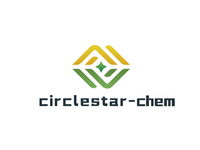Product Name: Doxorubicin hydrochloride
Synonyms: ADRIACIN;ADRIBLASTINA;ADRIBLASTINA HYDROCHLORIDE;ADRIAMYCIN HCL;ADRIAMYCIN HYDROCHLORIDE;(8s-cis)-10-[(3-amino-2,3,6-trideoxy-alpha-l-lyxo-hexopyranosyl)oxy]-7,8,9,10-tetrahydro-6,8,11-trihydroxy-8-(hydroxyacetyl)-1-methoxynaphthacene-5,12-dione hydrochloride;14-HYDROXYDAUNOMYCIN HCL;14-HYDROXYDAUNOMYCIN HYDROCHLORIDE
CAS: 25316-40-9
MF: C27H29NO11.ClH
MW: 579.98
EINECS: 246-818-3
Product Categories: Antitumour;Active Pharmaceutical Ingredients;APIs;Intermediates & Fine Chemicals;Adriamycin;inhibitor;API;Pharmaceuticals;Anti-cancer&immunity;Inhibitors;25316-40-9
Doxorubicin (DXR) is a clinically important cancer chemotherapeutic agent and, in spite of undesirable acute and long-term toxic effects, DXR remains one of the most widely used antitumor drugs because of its broad spectrum of activity[1]. DXR was first isolated in 1969[1] from Streptomyces peucetius subsp caesius ATCC 27952, a higher DXR-producing mutant strain derived from the wild-type S. peucetius ATCC 29050 strain, and is formed by C-14 hydroxylation of its immediate precursor, DNR. Although a number of organisms (including the 29050 strain) are known to produce DNR [2], S. peucetius subsp caesius is the only organism reported to produce DXR. The current production of DXR is over 225 kilograms annually due to its wide use and the fact that it is the starting point for the synthesis of numerous analogs and derivatives aimed at improving clinical cancer treatment[1].

 China
China




